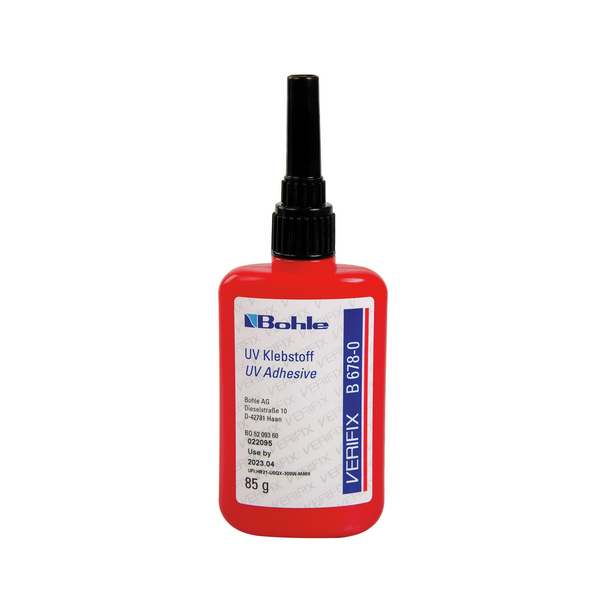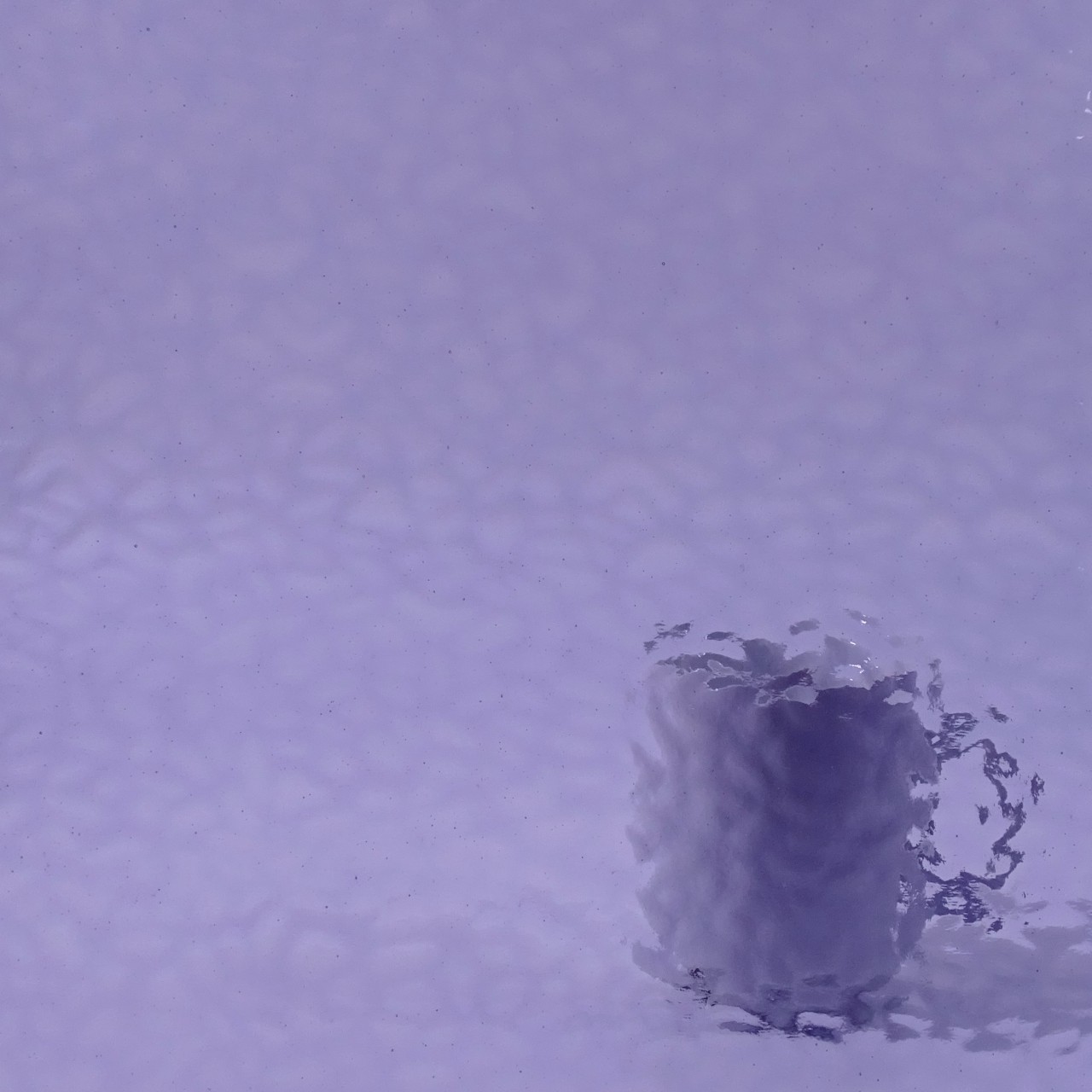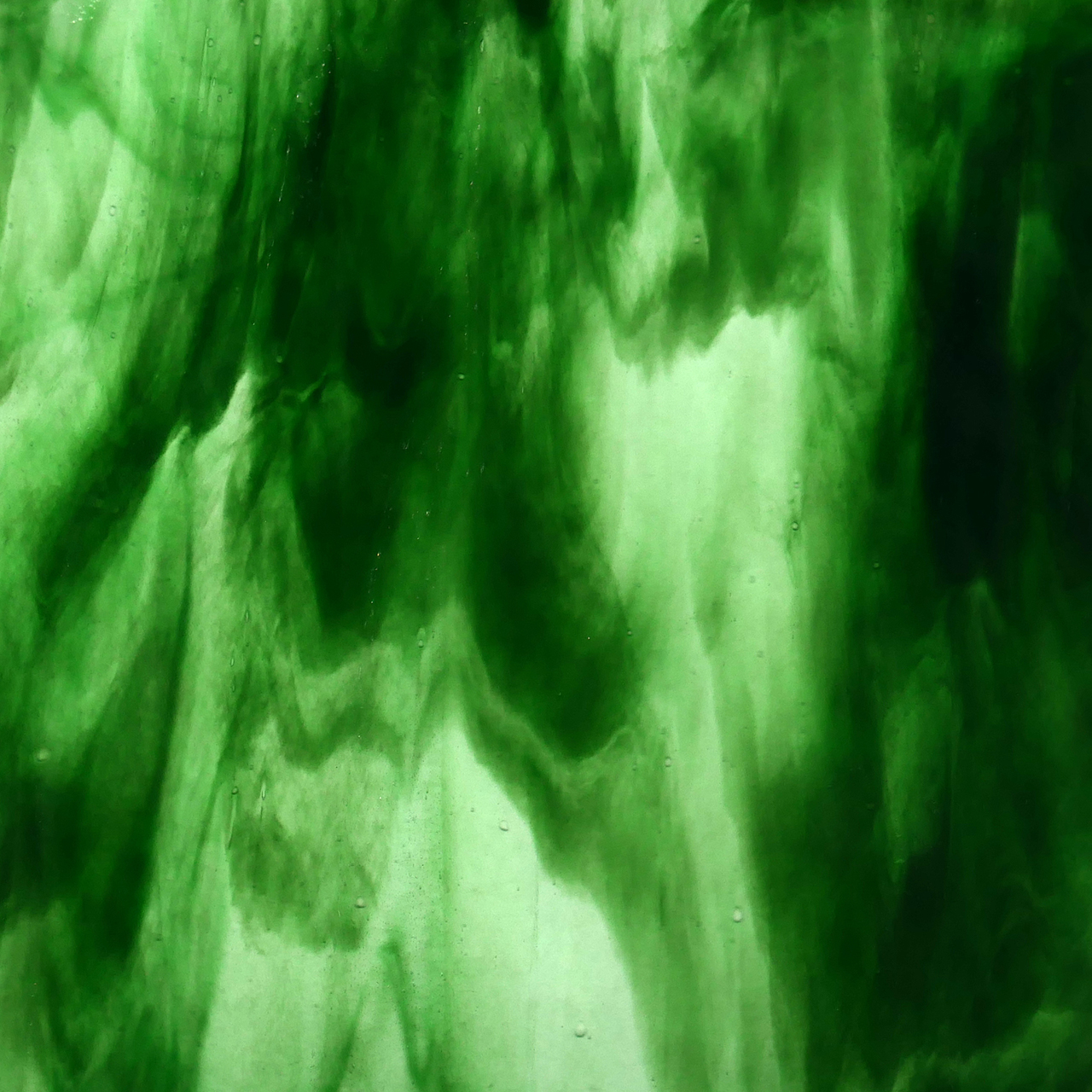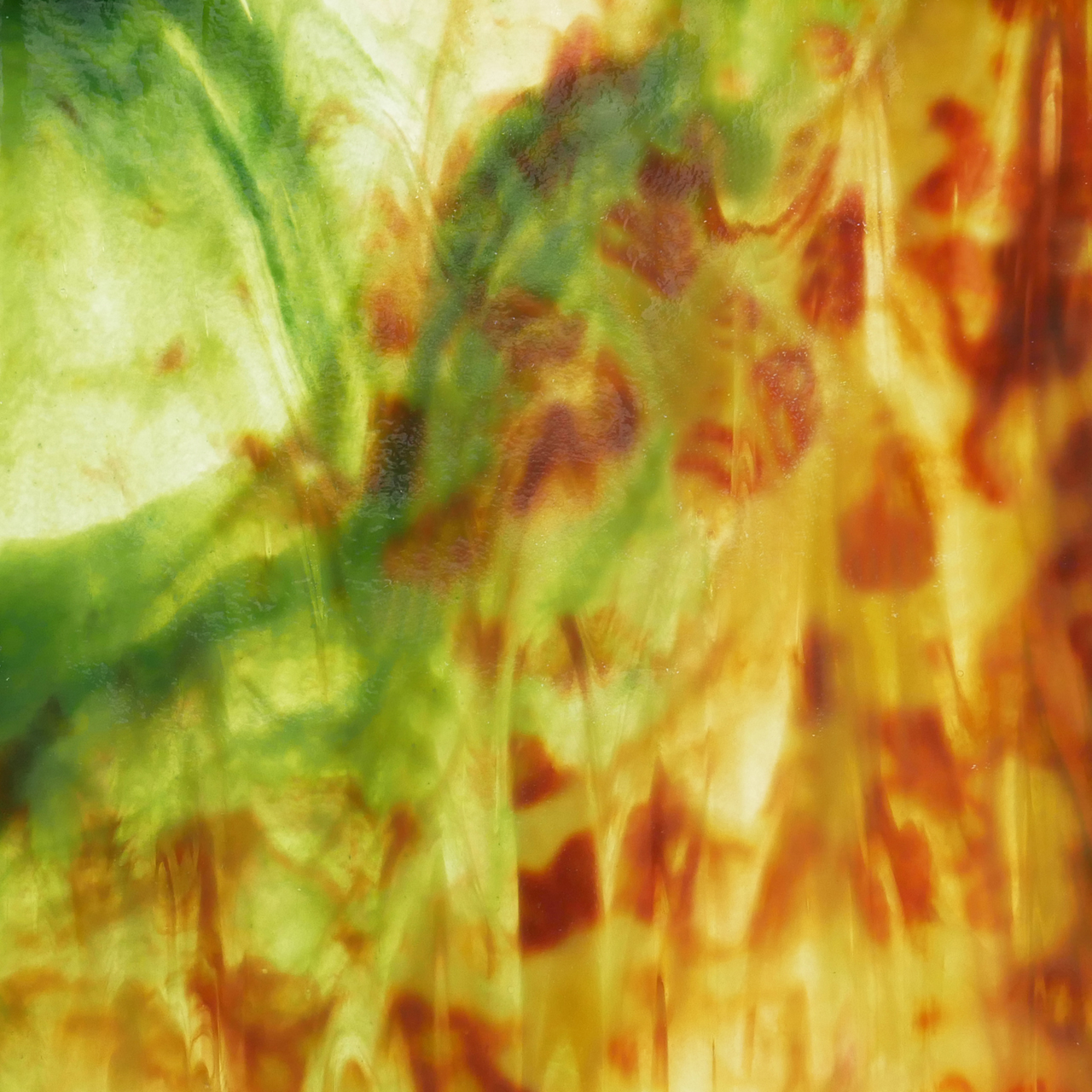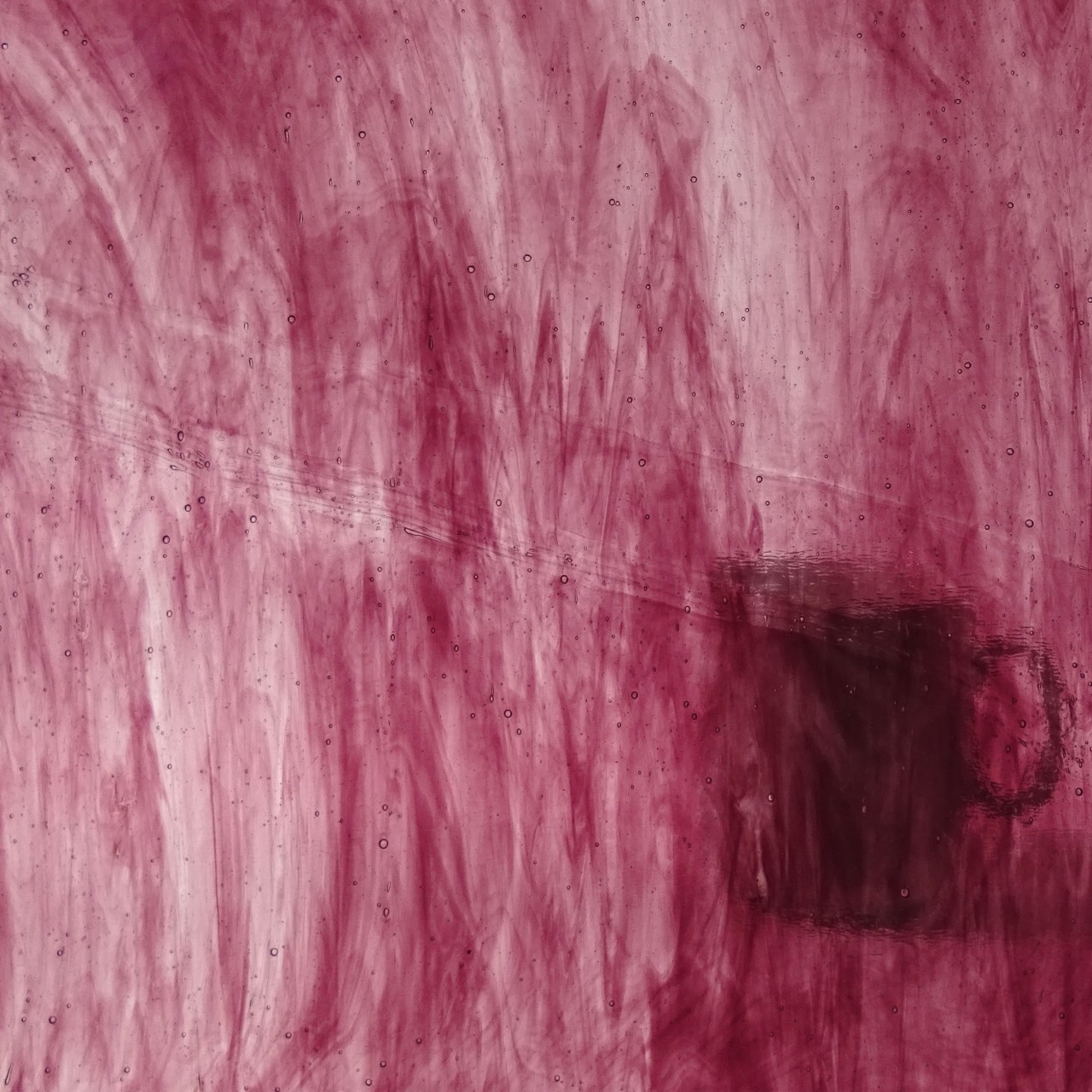VERIFIX-UV glue B 678 85g
1. Product Description
suitable for surface bonds with float glass, tempered glass, laminated safety glass, metal, wood, stone and different plastics - elastic - crystal clear - UV curing, light curing - Shelf life in original packaging: 12 months from the date of manufacture
This UV-curing adhesive is crystal clear and has medium viscosity. It shows good capillary properties with glass up to 6mm. Due to its elasticity, this adhesive is ideal for bonding many different material combinations. It also has the capacity to absorb vibrations in the bonding joint. Especially interesting, however, is its suitability for bonding laminated safety glass, where the PVB film absorbs much of the UVA radiation. Because this adhesive is made to also cure by daylight, it reacts with the remaining radiation (above 380 nm) and cures. Butt joints are no problem, even when multi-laminated units are involved: the adhesive does not affect the PVB layers. „Lamifix" adhesive is ideal for bonding laminated glass to laminated or ordinary glass, but also to wood, stone, metal and many thermoplastics. When bonding thermoplastics you should always do intensive testing first because not all thermoplastics can be bonded without problems.This UV-curing adhesive is crystal clear and has medium viscosity. It shows good capillary properties with glass up to 6mm. Due to its elasticity, this adhesive is ideal for bonding many different material combinations. It also has the capacity to absorb vibrations in the bonding joint. Especially interesting, however, is its suitability for bonding laminated safety glass, where the PVB film absorbs much of the UVA radiation. Because this adhesive is made to also cure by daylight, it reacts with the remaining radiation (above 380 nm) and cures. Butt joints are no problem, even when multi-laminated units are involved: the adhesive does not affect the PVB layers. „Lamifix" adhesive is ideal for bonding laminated glass to laminated or ordinary glass, but also to wood, stone, metal and many thermoplastics. When bonding thermoplastics you should always do intensive testing first because not all thermoplastics can be bonded without problems.
2. Fields of Application
bonding laminated glass units
bonding little light-permeable glasses (coloured glass)
Three dimensional glass constructions
3. Suitable Bonding Materials
laminated glass to ordinary glass
laminated glass to wood
laminated glass to laminated glass
laminated glass to metal
laminated glass to stone
laminated glass to some thermoplastics
4. Characteristics
Material Basis Methacrylic Ester
Colour Glass clear
Density Approx. 1.03 g/cm³
Flash Point Approx. 89°C
Viscosity Approx. 600 mPa·s
Consistency medium viscous
Gap Width 0.06 - 0.03 mm
Hardness Approx. 30 Shore D
Shear Strength Approx. 9 N/mm²
Temperature Resistance -40°C to +100°C
Linear Shrinkage Approx. 2,2%
Storage Shelf life in original container cool, dry, dark location (without UV radiation) note expiration date on bottle

